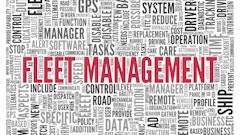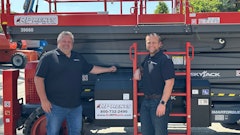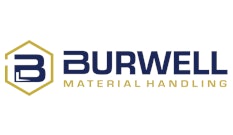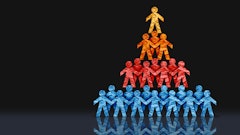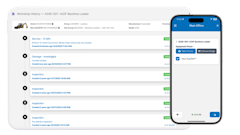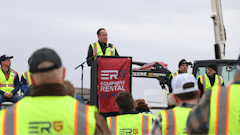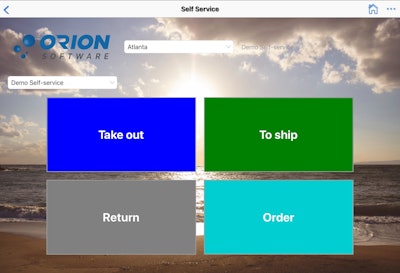
The way we do business is changing every day, thanks to profound technological advancements, most notably in mobile communications. But what about your business management software? It’s changing too, and in many ways that promise to provide modern solutions to challenges old and new.
“The solutions developed in the last 10 years are much easier to adapt to the business processes of modern companies,” says Patrice Boivin, president, Orion Software. “But many companies today are blocked by their rental solutions that cannot evolve with solid web solutions.
“Developing a transactional website with availability and specific pricing per customer requires modern technologies, and in today’s world, providing a web portal to customers is an essential part of an e-commerce strategy.”
The radical adoption of e-commerce in the retail industry over recent years suggests the trend will continue to affect the rental market as well. The larger players in the market are already offering web portals for the customers because it allows them to better control what they rent, add new equipment and monitor each construction site from a central application.
“For independent rental companies to compete, it’s imperative that they implement a web portal in the next few years,” Boivin states.
Modern solutions can be adaptive to business changes, he continues. “For instance, Orion developed a self-service stand to allow users to do their rental contract on their own instead of waiting in line to get to the counter. Customers are invited to download the mobile app or visit the web portal the next time they need equipment, thereby reducing their time at the rental store while developing a strong relationship that will last for years,” he explains.
“In the context of logistics, modern solutions are providing a new simplified way of dispatching delivery trucks by using the GPS position of the mobile devices instead of a complex integration with GPS devices mounted on the truck itself,” Boivin continues. “Simply from a smart device, you can add a new truck rented to the fleet or mix third-party trucking companies into the same dispatching center.”
He continues, “For the sales team, modern solutions offer multiple ways to improve their success rate. A CRM based on opportunities with a complete quoting application and an integrated e-signature is only possible with advanced software. Many studies are demonstrating that a disciplined follow-up of opportunities with a good CRM and accurate information is generating a significant increase of revenues. In rental, one of the key elements is accurate information because availability and pricing are not simple to deliver to the users.”
Managing your process from start to finish
With modern, cloud-based solutions, you can manage the entire rental process - from the time a piece of equipment is purchased through a rental contract, in addition to returns, inspections and service. It’s all tied together.
Here are some examples of how modern, mobile solutions can help you address your real-world rental processes:
Creating an order - In a modern, connected system, the salesperson creating the rental will know the history of the customer, the asset, the revenue of the transaction and have this information accessible from a single screen. "You need to be able to effectively execute all related tasks, including creating a rental agreement and notifying your warehouse so they can begin preparing for the necessary next steps," says Julie Stankey, marketing manager at NexVue Information Systems.
Warehouse activities - Your warehouse must know what they need to prep for delivery on future rentals. "Your system should be able to show them what needs to be rented by the date instead of order-by-order, and create the packing instructions for the warehouse to get each order ready for delivery," says Stankey. "Once the packing/prep sheet has been created, the delivery tickets/forms can be created, ideally available through a mobile device for on-site signatures."
Equipment delivery - You have a driver scheduled to drop off a piece of your heavy equipment to a new rental customer at a construction site. According to Stankey, with real-time tracking, you always know if the delivery is going to be on time. Once your driver arrives, if your customer has questions about the equipment, your driver has complete mobile access to your system in an easily accessible app and can answer all the questions about the agreement and the equipment, thanks to easy, mobile access to the equipment’s complete history. They will be able to see who has used it and research any repair issues, as well as determine when it’s due for maintenance or to the next customer.
Equipment exchange – What if you receive word that your equipment has been damaged and your customer needs an exchange to complete their project? "You can create a ticket and schedule a driver to make a call on your phone, and the driver can see all related detail to the customer on their mobile device," says Stankey.
Once the driver arrives, they can track all information through the ticket and through the equipment’s serial number. They can add to the ticket the reason for the exchange, take and include a photo of the damage, and have the customer sign for the replacement equipment on the spot.
Rentals coming due and returns - When a piece of equipment is coming due on a rental, a notice should automatically go out to that customer saying “It’s scheduled for return in two days, if you don’t let us know that it’s going to be late, there will be a fee.” This process should not require human intervention.
"Once a project is complete, your representatives in the field can check-in equipment upon pick-up," Nextvue says. "You can also verify and track its condition so that anyone can see if it’s ready for use again immediately."
Time and expense entry on the go - Modern, mobile applications will enable mobile time and expense management so that your drivers and other users can submit expenses and receipts in real-time, with photos of receipts that can be easily attached to expense records.
Leveraging modern technology to reduce costs and increase returns
Staying competitive in today’s fast-paced market is more important than ever before. You have to look at your systems and processes and understand business transactions from your internal users’ perspective as well as that of your customers.
"You must be ‘easy to do business with’ and at the same time, choose systems, infrastructure and processes that provide the lowest cost/highest value over the long haul," explains Darian Henschell with Sycor.
Today, a subscription-based model might provide the lowest total cost of ownership for your business. Along with making these decisions, many companies struggle with whether to get a “departmental/vertical/best of breed” rental solution that is built specifically for their business, or to buy a fully integrated enterprise resource planning system (ERP) that has built-in rental and service functionality.
"Many best-of-breed solutions are still built on older technology," Henschell says. "You will find solutions that are running old code with a graphical or web front end. This ‘lipstick on a pig’ approach makes it difficult to leverage new technologies without having to rewrite everything back into the old code. The result is less flexibility with a higher cost of maintenance."
Embracing the potential of telematics
Formerly, telematics was useful in determining the location of equipment and the hours/miles on a machine, but what more companies are asking for now is the ability to take machine readings (water temperature, oil pressure, loading, etc.) and combine that with other relevant data. With many machines, you also want to know how many cycles or how much material is being lifted or moved. The more you know, the more data you can include in your analytics and thus, provide a more complete picture of your equipment operation.
"Results from oil analysis can also help determine the next service interval and when a piece of equipment is ready for overhaul/replacement," says Henschell. "Technology like Microsoft’s Cloud IoT Server can take any data from any type of sensor and bring it back to your system for analysis and action. By leveraging these and other functions of today’s ERP solutions, properly configured with the needed equipment management functionality, you can reduce costs and increase returns for your business."
Whether you are debating converting to the cloud, unsure if you should utilize a subscription-based pricing model, or trying to decide between an ERP-based system versus best of breed, there are undoubtedly many variables to consider.
"What will set you apart is how well you understand the current technologies available to you, your ability to determine whether they make sense for your business, as well as your willingness to adapt when necessary," says Henschell. "Companies that are able to do so are better equipped to select the right type of software for their business, resulting in improved customer service, optimized internal processes, increased ROI, and the ability to adapt quickly to ever-changing technology."

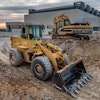



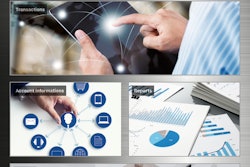


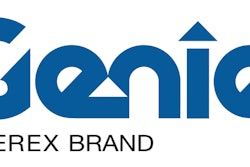
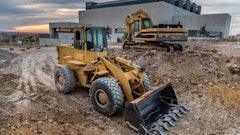



![Herc 5745c08a34274 1 65ce4101dd187[1]](https://img.forconstructionpros.com/mindful/acbm/workspaces/default/uploads/2025/06/herc5745c08a34274-1-65ce4101dd1871.UqeKvSiS04.png?ar=16%3A9&auto=format%2Ccompress&bg=fff&fill-color=fff&fit=fill&h=135&q=70&w=240)
